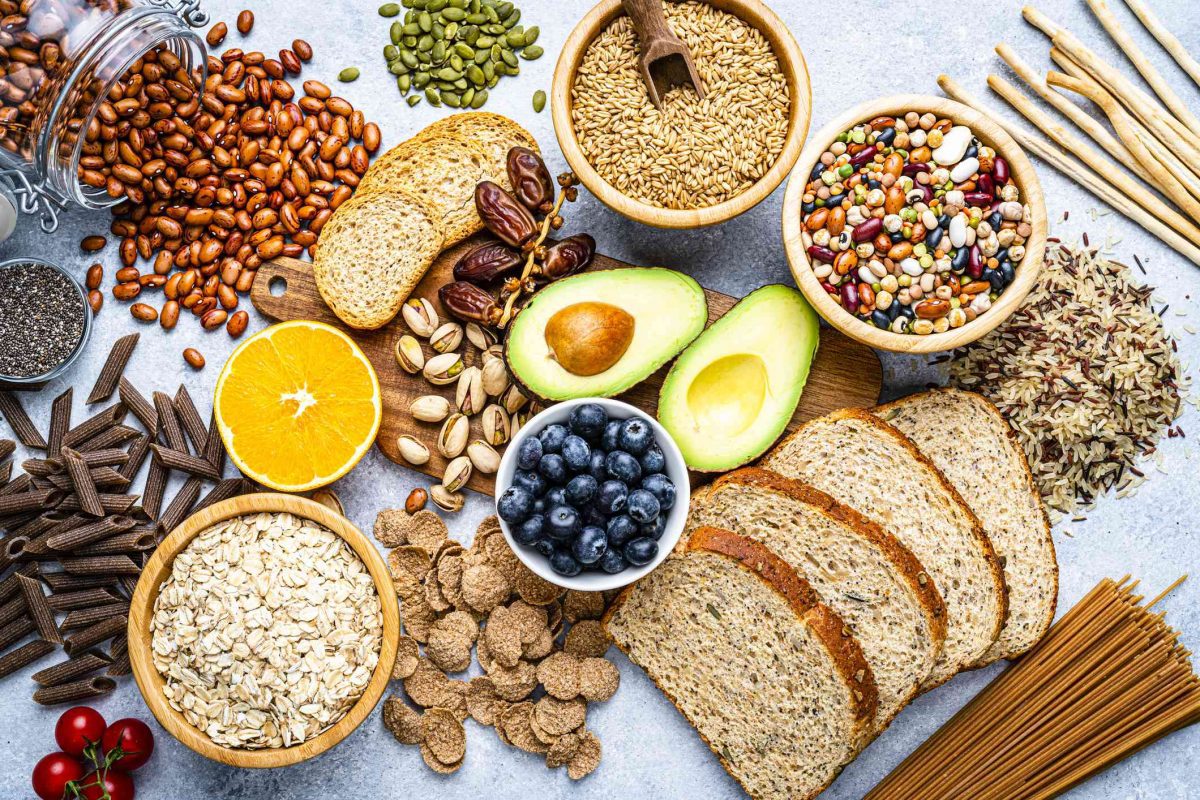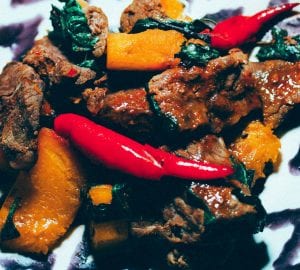In the pursuit of a vibrant and well-balanced life, what you put on your plate matters. Incorporating high fiber foods into your daily diet isn’t just a choice; it’s a commitment to your overall well-being. Fiber-rich foods offer a plethora of benefits, from aiding digestion and maintaining a healthy weight to reducing the risk of chronic diseases. In this article, we delve into the world of fiber, highlighting 10 essential high fiber foods with low carbs that deserve a place on your plate. Get ready to revitalize your diet and boost your health with these nutritional powerhouses.
The Academy of Nutrition and Dietetics recommends consuming about 14 grams (g) of fiber for every 1,000 calories you consume daily.
The following table shows the recommended fiber intake for people of different ages:
Age Male Female 1–3 years 14 g 14 g 4–8 years 19.6 g 16.8 g 9–13 years 25.2 g 22.4 g 14–18 years 30.8 g 25.2 g 19–50 years 38 g 25 g 51 years and over 30 g 21 g
Most Americans consume only around 15 g of fiber per day, or half of their recommended needs.
Understanding Fiber: Types and Its Varieties
The concept of fiber and its classifications has evolved over time, presenting us with a nuanced understanding of this essential component of our diet. Initially, fiber was recognized as a type of carbohydrate that eluded the body’s digestion process. However, recent scientific advancements have uncovered that certain digestible substances also share fiber-like properties, thereby complicating the traditional definition of fiber.
Let’s look into the various ways in which scientists categorize fiber:
- Dietary Fiber: This is naturally occurring fiber found in the plants we consume as part of our diet.
- Added Fiber: Manufacturers incorporate this type of fiber into products to enhance their health benefits.
- Soluble Fiber: Soluble fibers are those that dissolve in water and can be digested by the body.
- Insoluble Fiber: In contrast, insoluble fibers are indigestible.
Soluble fibers originate from the inner parts of plants and encompass substances like pectin. These fibers can be sourced from a range of foods, including fruits, vegetables, oats, and barley. One of their key benefits lies in their potential to manage blood sugar and cholesterol levels.
Insoluble fibers, on the other hand, are derived from the outer skins of plants. They traverse the digestive system without undergoing digestion, making them valuable in preventing constipation. Notable sources of insoluble fiber include bran, celery, whole grains, and seeds.
The Advantages of Incorporating Fiber into Your Diet
Dietary fiber encompasses a range of benefits that contribute to your overall well-being:
1. Lowering Cholesterol: The presence of fiber in your digestive system can actively reduce the absorption of cholesterol within your body. This effect is particularly notable when combining fiber supplements like psyllium fiber with medications like statins.
2. Supporting Healthy Weight: High fiber foods with low carbs, such as fruits and vegetables, often carry fewer calories. Moreover, fiber possesses the ability to decelerate the digestion process, promoting a prolonged feeling of fullness and curbing unnecessary cravings.
3. Combating Constipation: Fiber serves as a digestive accelerator, preventing constipation by hastening the pace of digestion. Insoluble fiber, which your body doesn’t digest, adds volume to the digestive tract, stimulating its activity.
4. Managing Blood Sugar Levels: Foods rich in fiber require more time for the body to break down, resulting in a gradual release of glucose into the bloodstream. This mechanism aids in maintaining stable blood sugar levels, fostering improved overall health.
5. Reducing Cancer Risk: Adequate fiber intake has been linked to a reduced risk of certain cancers, most notably colon cancer. Some forms of fiber, like the pectin found in apples, even possess antioxidant properties that contribute to this protective effect.
As you introduce high fiber foods with low carbs into your dietary regimen, it’s advisable to do so gradually over a few days. Remember to maintain proper hydration by consuming ample water. This not only aids in maximizing the benefits of fiber but also minimizes potential side effects such as bloating and gas. By embracing the manifold advantages of fiber, you’re proactively nurturing your body’s vitality and promoting long-term health.
10 High Fiber Foods You Should Be Eating
1. Apples: Crunch into Goodness
Apples, nature’s portable snack, are loaded with soluble fiber called pectin. This fiber not only aids digestion but also helps regulate blood sugar levels and keeps cholesterol in check. Keep the skin on for maximum fiber content.
2. Oats: Start Your Day Right
A warm bowl of oatmeal is a breakfast champion. Rich in both soluble and insoluble fiber, oats promote a feeling of fullness and support heart health. Customize your oats with fruits and nuts for an extra nutritional punch.
3. Legumes: Protein-Packed Goodness
Beans, lentils, and chickpeas are leguminous wonders. Their high fiber content, coupled with protein, makes them a superb choice for a balanced diet. They also help stabilize blood sugar levels and promote gut health.
4. Broccoli: Verdant Fiber Source
Broccoli isn’t just a nutrient-packed vegetable; it’s also a fiber powerhouse. Packed with antioxidants and vitamins, it supports digestion, enhances detoxification, and may even have cancer-fighting properties.
5. Berries: Nature’s Sweet Fiber Treats
Blueberries, raspberries, and strawberries burst with flavor and fiber. Their antioxidants boost brain health while their fiber aids digestion and keeps you feeling satisfied between meals.
6. Quinoa: Ancient Grain, Modern Benefits
Quinoa is a complete protein source with a hearty dose of fiber. Its nutty flavor and versatility make it a fantastic base for salads, bowls, and side dishes.
7. Chia Seeds: Tiny but Mighty
Don’t underestimate these tiny seeds. Chia seeds are rich in soluble fiber, absorbing water to create a gel-like consistency that aids digestion. They’re also a great source of omega-3 fatty acids.
8. Whole Grains: Fiber in Every Bite
Swap refined grains for whole grains like brown rice, whole wheat, and barley. These grains retain their bran and germ, providing essential nutrients and fiber to support heart health and digestion.
9. Sweet Potatoes: Nutrient-Dense Delights
With their vibrant orange hue, sweet potatoes are a delicious source of dietary fiber. They’re also rich in vitamins and minerals, making them an excellent choice for a nutrient-dense diet.
10. Nuts and Seeds: Crunchy Fiber Boosters
Almonds, walnuts, flaxseeds, and pumpkin seeds are excellent sources of both fiber and healthy fats. A handful of these nutrient-packed treats can satisfy hunger and provide essential nutrients.
Commonly Asked Questions about Fiber
1. What are the high fiber foods with low carbs? Foods like lentils, pears, celery, leafy greens, and oatmeal are notably rich in fiber. However, the diversity of fiber types and individual food consumption patterns make direct comparisons for the highest fiber content challenging.
2. What are the top 10 foods for fiber? Consider incorporating chickpeas, lentils, split peas, oats, apples, pears, almonds, chia seeds, Brussels sprouts, and avocado into your diet for a fiber boost. Remember, maintaining nutrient balance is crucial. Focus not only on fiber content but also the overall nutritional profile, including calories and other nutrients per 100 g of the food.
3. How can I enhance my fiber intake? Elevate your fiber intake by introducing oatmeal, pulses, and a variety of fresh fruits and vegetables into your meals. Opt for whole fruits and potatoes with their skins intact and choose wholemeal bread over its white counterpart. To prevent gas and bloating, gradually incorporate fiber into your diet over several days if you’re transitioning to a higher fiber intake.
4. How can I achieve a daily intake of 30g of fiber? The table below provides an illustrative example of how you can surpass 40g of fiber in a day, using data from the United States Department of Agriculture as a reference. This serves as a practical guide for reaching the recommended fiber intake.
Meal Food item Fiber Breakfast 25 blueberries
1 cup cooked oatmeal1 g
4 gLunch 1/2 cup of cooked brown rice
1/2 cup of cooked split peas
1/2 cup of cooked broccoli1.5 g
8.5 g
3 gSupper 1 avocado
2 slices of whole wheat toast13.5 g
4 gSnack 1 medium pear 5.5 g Total 41 g
Please note that dietary preferences and nutritional requirements may vary. Always consult with a healthcare professional or nutritionist before making significant changes to your diet.
In Summary
Fiber stands as a vital nutrient, offering potential benefits such as aiding weight loss, regulating blood sugar, and addressing constipation.
While the suggested daily intake is 25g for women and 38g for men, it’s worth noting that many Americans fall short of meeting these fiber goals.
Incorporating the aforementioned high fiber foods with low carbs into your meals presents an excellent opportunity to boost your fiber intake and enhance your overall nutrition.








